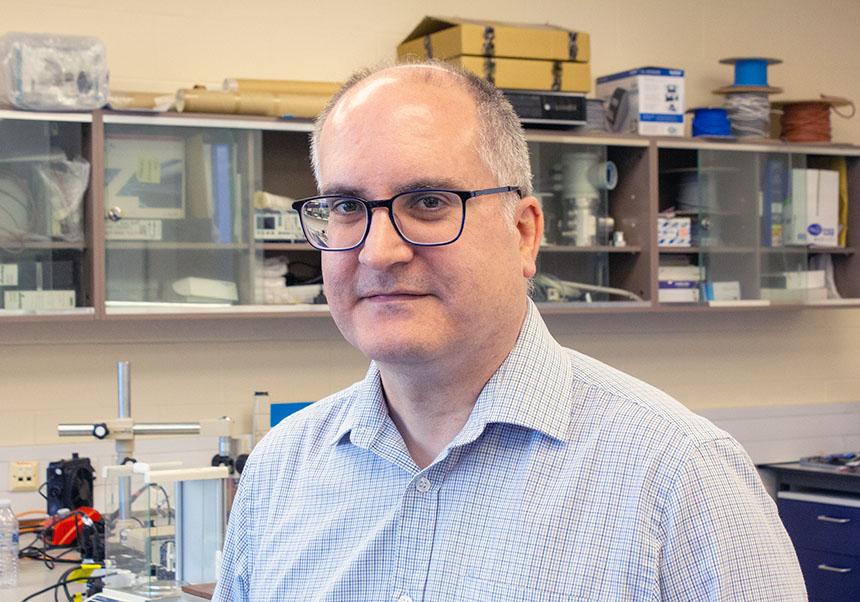An international research team, with the participation of the Institute of Materials Science of the University of Valencia (ICMUV), located in the Science Park of the University of Valencia (PCUV), has managed to multiply the luminescence efficiency of upconversion nanomaterials, a light absorption and emission system that offers great advantages in applications such as 3D printing, bioimaging or solar cells. The work, recently published in Nature Photonics, opens the doors of the most advanced luminescence to lanthanide nanoparticles, as they have surpassed a level of efficiency hitherto almost exclusive to conventional materials
Upconversion materials have the ability to emit light in the visible or ultraviolet region, starting from lower energy photons, and are useful for a wide range of applications in sectors such as energy, optics or photonics. For more than two decades, nanomaterials based on lanthanides –metals commonly known as ‘rare earths’– have been rivalling the more conventional micromaterials in terms of their multiple possibilities for progress in these fields. One fascinating feature, for example, of nanomaterials is the ability to distribute atoms in unusual formations, allowing the properties of the material to be modified to benefit a particular interest, outperforming conventional materials. It is quantum mechanics superimposing on classical mechanics.
However, one of the major problems of upconversion is the low light emission efficiency of the materials used, especially in the case of nanoparticles, since obtaining high-energy photons from low-energy photons is an unnatural process. Overcoming this handicap has been a challenge for materials science for years.
An international research team, with the participation of the Institute of Materials Science of the University of Valencia (ICMUV), located in the Science Park of the University of Valencia (PCUV), has just achieved much more efficient lanthanide nanoparticles for optical upconversion, surpassing the light capacity of conventional materials.
The work, recently published in Nature Photonics, shows that precise control of the size of the domain – that is, of the intermediate layer of the lanthanide nanoparticle – increases the efficiency of the nanomaterial to exceed that of its micrometer-scale counterparts. “It’s all due to a unique size effect in lanthanide-based luminescent materials, due to a long-range energy transfer that leads to an impressive upconversion quantum yield, converting up to 26% of the photons”, explains José Marqués-Hueso, Beatriz Galindo distinguished-senior researcher at ICMUV and co-signer of the paper. “We have used some atoms as sensitisers specialised in absorbing the excitation and transferring the energy to the emitting atom to produce light. We have done this by synthesising three-layer onion-shaped nanoparticles with near-atomic precision”, details Feng Li, first author of the paper. “The advantages are now undeniable for bioimaging, optogenetics, nanothermometry, super-resolution nanoscopy and so many other practical technological applications, the demands of which could not be met until now because of the low light efficiency levels of these nanomaterials”, says Liangping Tu, co-author of the paper.
“We have used some atoms as sensitisers specialised in absorbing the excitation and transferring the energy to the emitting atom to produce light. We have done this by synthesising three-layer onion-shaped nanoparticles with near-atomic precision”, Feng Li, first author of the paper
Led by the Harbin Institute of Technology (China), the project has the participation of the Universität Bern (Switzerland), the Heriot Watt University of Edinburgh (Scotland) and the University of Valencia (Spain).
News in the media


